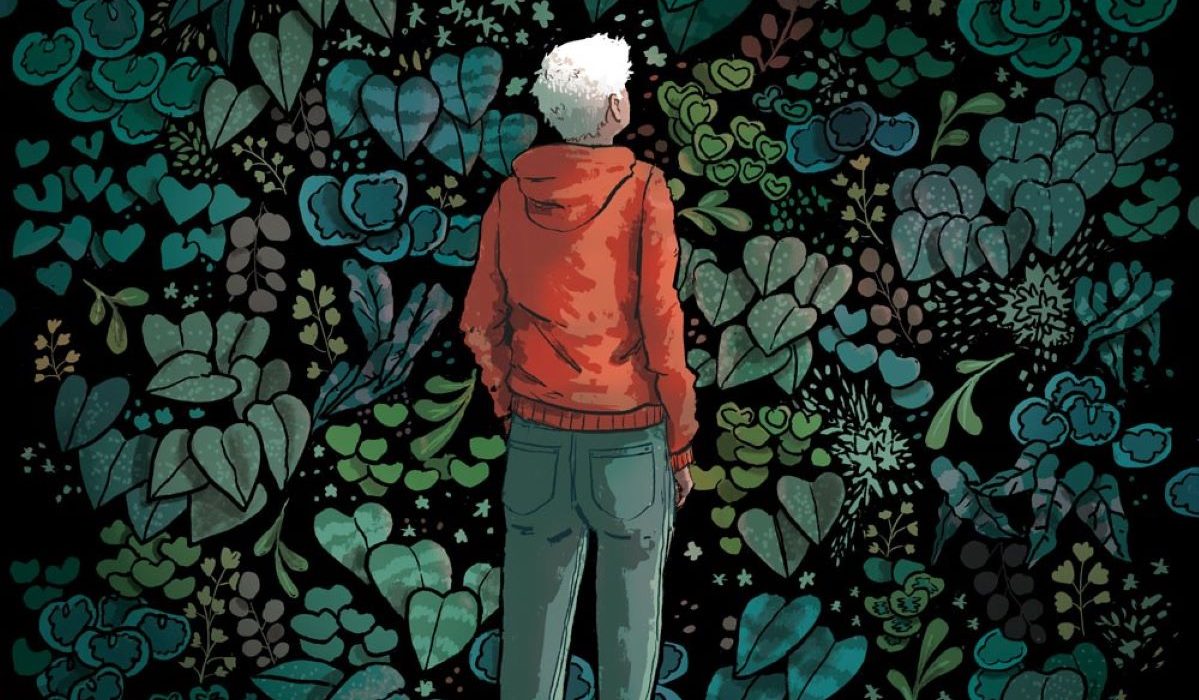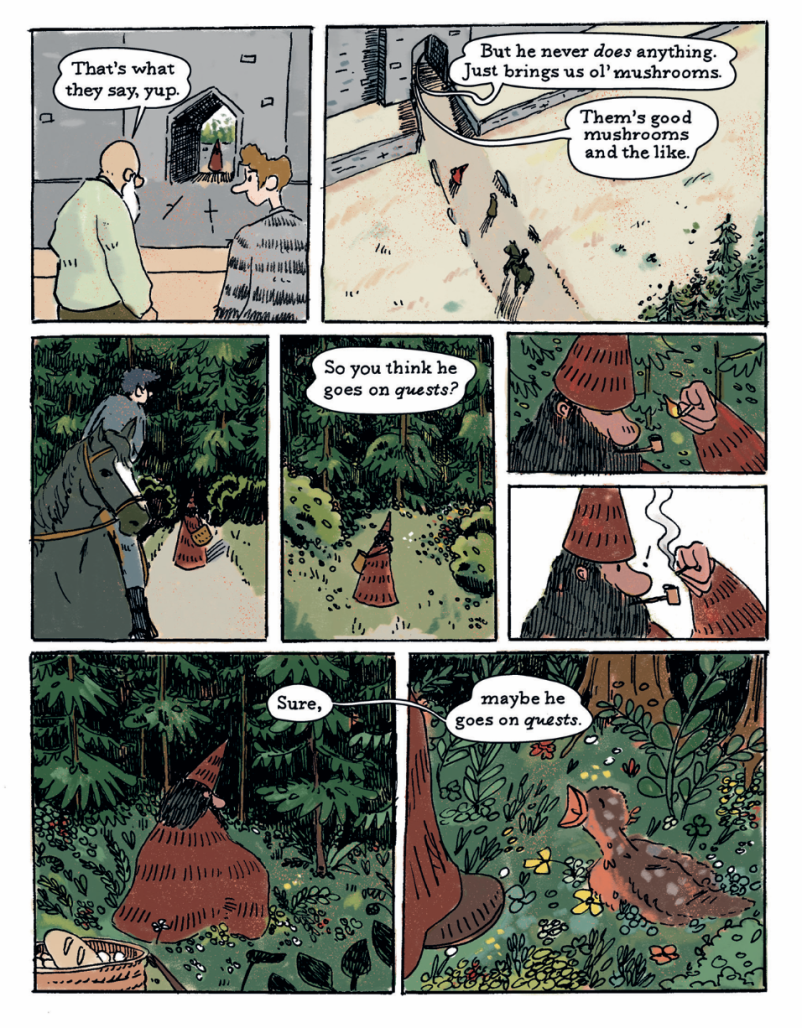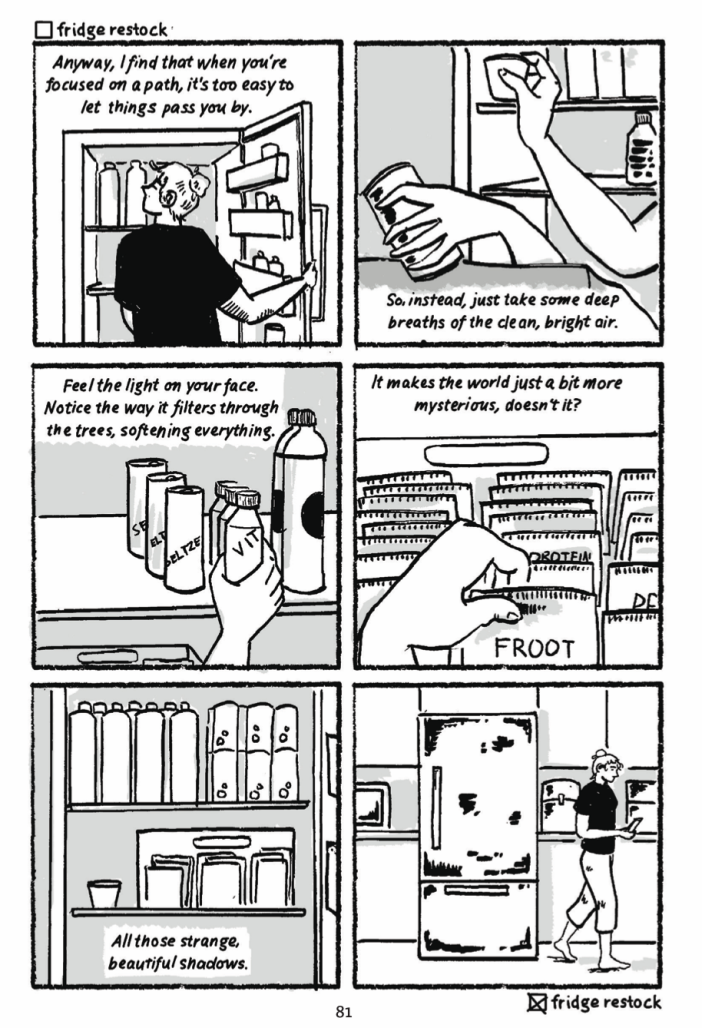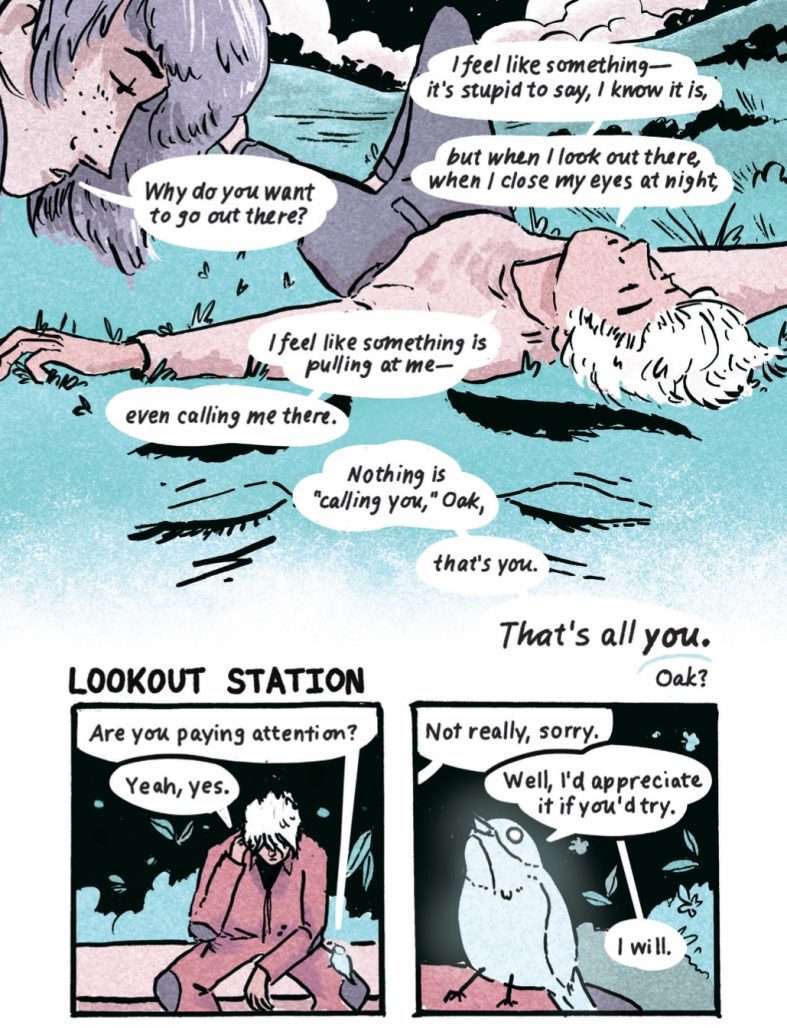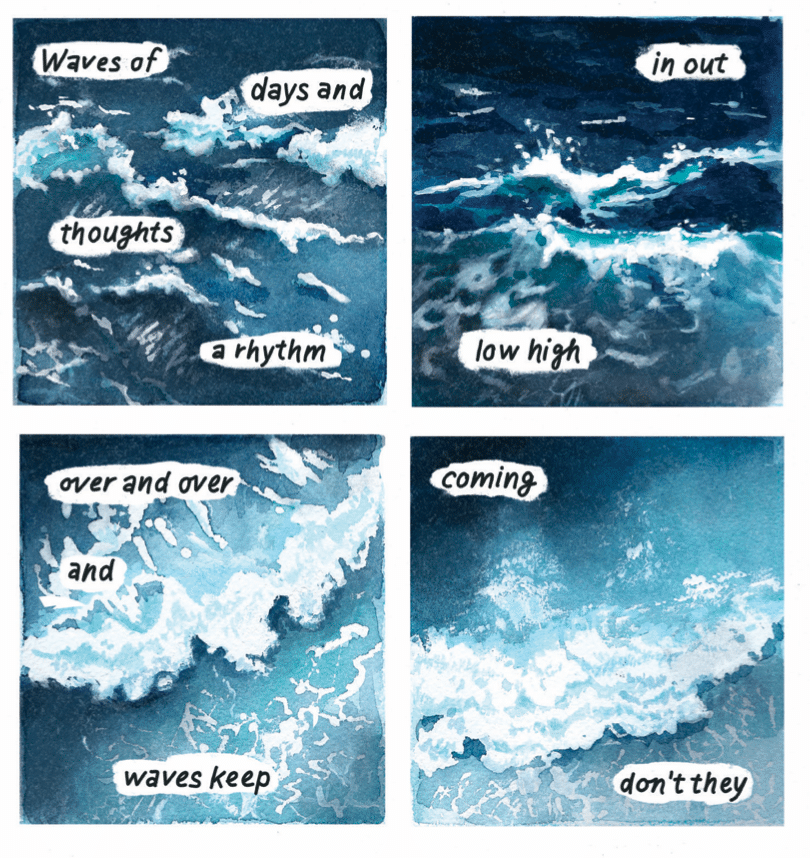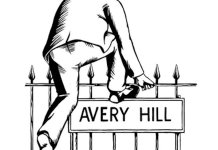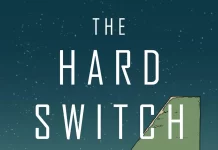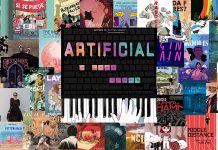Safer Places
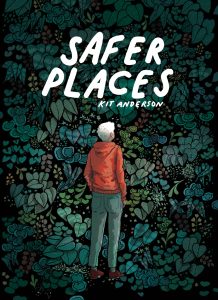
Writer/Artist: Kit Anderson
Publisher: Avery Hill Publishing
Publication Date: May 23, 2023
From the very first pages of Kit Anderson’s Safer Places—out May 23 from Avery Hill Publishing–I could tell I was in capable hands. The collection lives up to its title, establishing a rich and transporting sense of place in each story.
Given that this is Anderson’s first graphic novel, which launched on Kickstarter in January, it is likely to be many people’s first taste of her work, as it was mine. It’s an impressive debut. Just judging from the skillful interplay of art and words, I would have been convinced that this was far from her first. She quickly earned a spot on my list of creators to watch.
The opening vignette in Safer Places, “Quest I,” about a man with a reverence for wild beings (who might or might not be a “wizard”), charmed me with its storybook feel, moments of care, and exploration of what a true wizard might look like in this world. Other parts of the man’s story arc occur throughout the collection, gems of humaneness.
Anderson plays with different textures, line qualities, indeed entire art styles, from the painterly to the more cartoonish, full color to single color to black and white. But the book still feels continuous to me. Nature in all its forms is her through line. Across the collection, she maintains subtlety, a keen sense for moments of meaning (or emptiness), and often a surreal or magical quality.
Books of short stories can often be uneven and disconnected, but I found Safer Places to be the opposite. Recurring themes from the stories shine out and reinforce one another beautifully, contemplations on how to live (or how not to live).
Sometimes I had to laugh at the relatability, like when reading Safer Places’ three-story arc about guided meditations or sleep tapes. In one standout story, “Sleep Tape: Forest Walk,” the contrast between the lush forest descriptions in the recording and the sterile urban landscape of the protagonist cleverly skewers a form of modern “self-care” and efficiency. I had an existential moment after reading it, looking around and blinking in the darkness, the blue glow from my computer highlighting how much I had in common with the main character. How many of us stop relating to the natural world and check off some poor approximation on our task list?
Like “Sleep Tape: Forest Walk,” many of the stories explore how urban life runs up against nature, in both realistic and surreal ways. They aren’t necessarily directives on how to respond, but simply observations on how people can and do respond. What is the result of responding in these ways? Would we make different choices? Whether their actions make them happy or miserable, it all feels true.
In another story, “Lookout Station,” we follow a character whose natural environment is not all it seems, and the surreal becomes a metaphor for separation. The choice (accidental or not) between connection and isolation—from others, from nature—is another recurring theme. Some characters seem poised on the precipice between a connected life and a lonely one, some seem to be suffering or even numb, while still others seem to have the wisdom to reach out or simply be present.
Yet Anderson never appears judgmental, instead giving her characters compassion and space to reflect… giving us space to reflect with them.
Each individual story stands strong, leaving me enriched with insight, deep emotions, and sometimes a knowing laugh. It’s everything I could wish for in a collection.
Safer Places can mean a lot of things. The inner place that we might go to, to avoid rejection, that might prevent us from real connection in the end. The place of good memories we go back to when times get hard. The natural places we might seek out that could ultimately save us, as natural beings.
This collection is special. Savor it slowly, and remember what it means to be alive.
Click here for more info about Safer Places.



